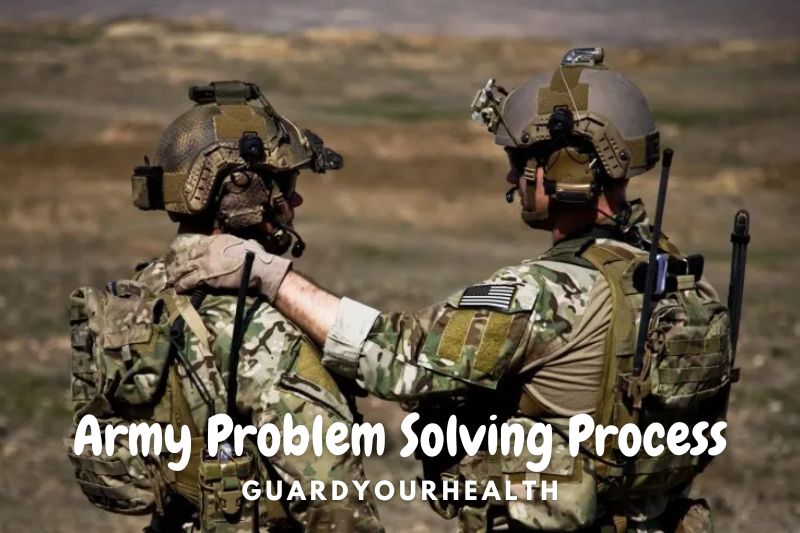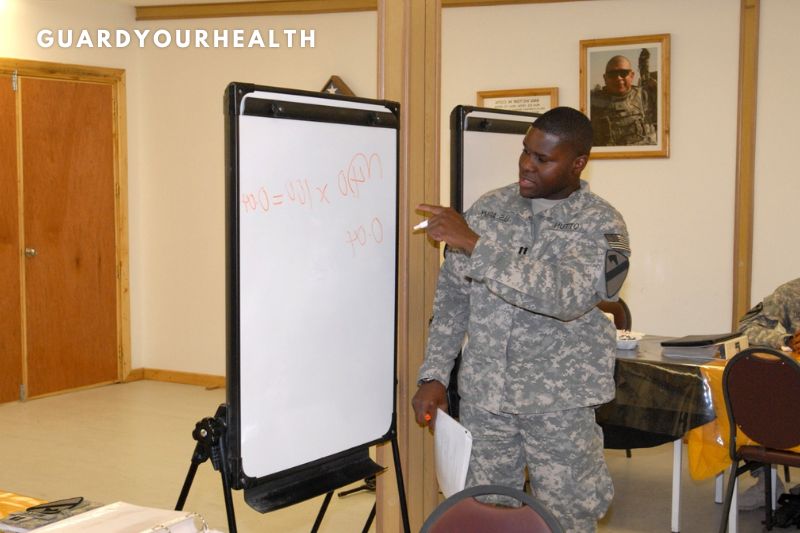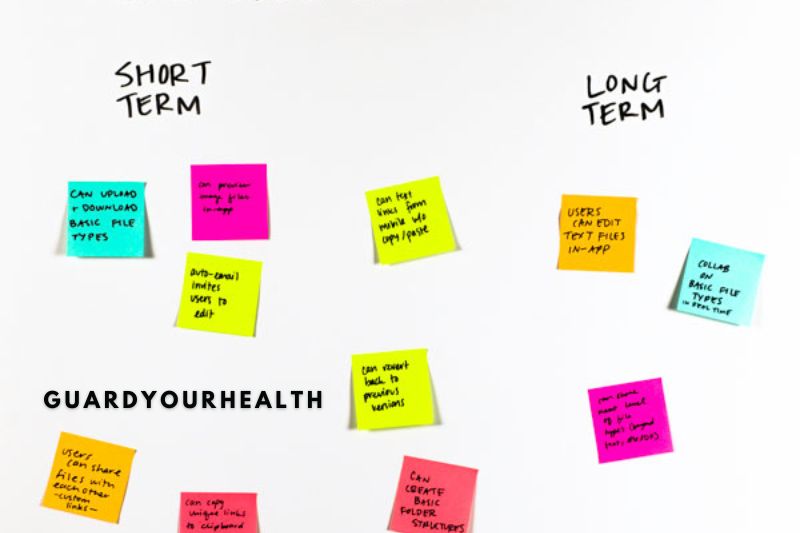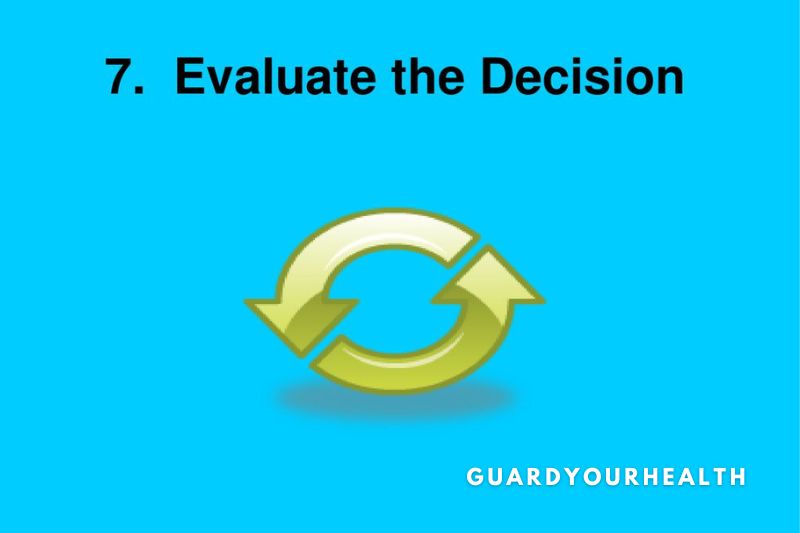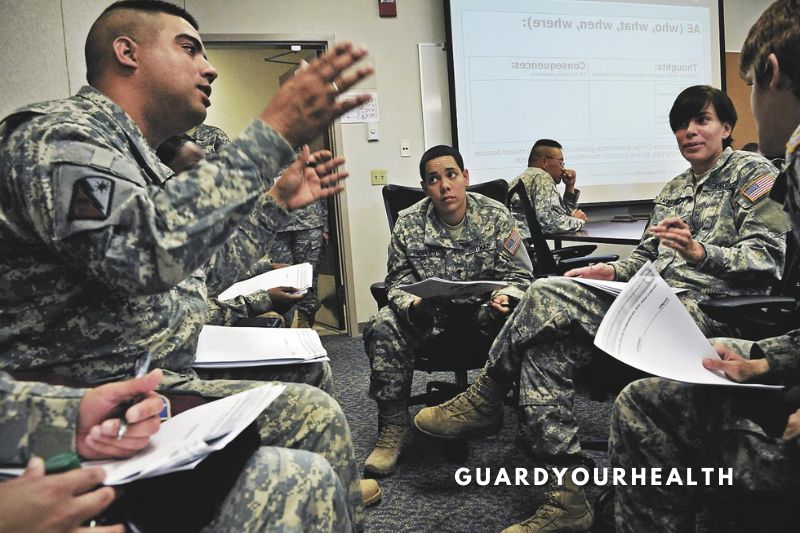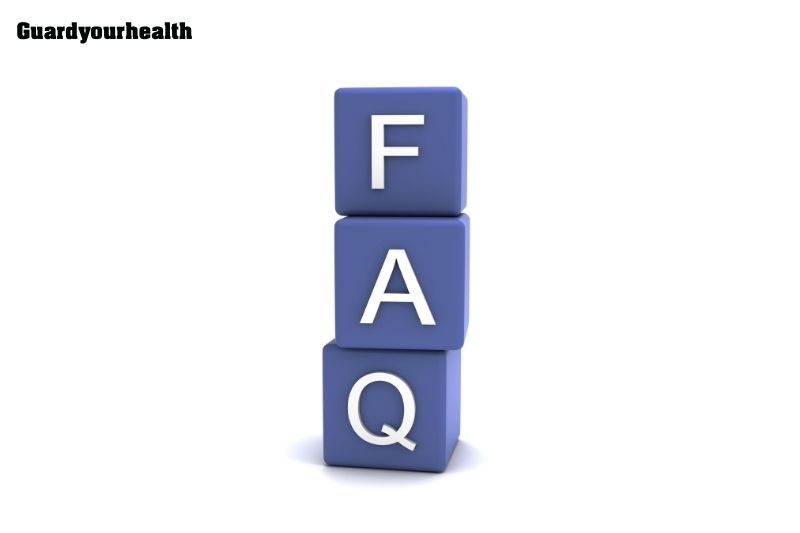The Army problem solving process typically begins with identifying a problem or opportunity. Once a problem is identified, a team is assembled to brainstorm possible solutions.
After potential solutions are generated, the team evaluates each solution and selects the best option. The selected solution is then implemented and monitored to ensure effectiveness.
What Is The Seven-step Military Solving Process?
The seven-step military problem-solving procedure is a systematic approach to identifying and resolving difficulties. This technique may assist military and civilian participants in promptly addressing issues and developing successful solutions. This strategy may also assist team members in improving their teamwork, communication, and critical-thinking skills.
7 Steps Military Problem Solving Process
The first stage is identifying the issue, which involves recognizing and determining what needs to be fixed. You cannot seek a solution until you understand what must be addressed. Once you have pinpointed your issue, you will have a clear aim or ultimate destination. Only then can you devise the best course of action.
Step 1: Pinpoint the Problem
To successfully characterize the issue, consider the five Ws: who, what, where, and when. In particular:
- Who is impacted? What are the parties involved?
- What is impacted? What does the big picture look like?
- When is/was this event?
- Where/when did this occur?
Always be extremely clear about the situation and attempt to see it as objectively as possible. Consider yourself a third party looking at it rather than from it. It also helps organize your responses into a logical and concise issue statement.
Step 2: Identify the Facts and Assumptions
The next stage is to identify the facts and assumptions. This means gathering as much more information as possible in the time available. Try to gather more facts than assumptions by analyzing all conceivable internal and external aspects and combining them with what you thought out in the previous stage to discover the origin of the issue. This stage should also make you aware of the type and breadth of the issue.
You next take a sub-step: consider what you want the end product to be. This does not have to be difficult, but it must be concise. For example, one of your troop members may be missing and unreachable. Your final aim is to discover them and bring them back to your base with you. Remember that having a hazy end state will only complicate your problem-solving approach.
These first two elements include scenario assessment, the foundation for the subsequent steps of the military issue-solving process.
Step 3: Craft Alternatives
Moving on to the third stage, try to generate as many viable solutions as possible. You’ll have to use your imagination and visualization abilities here. Concurrently brainstorm and polish any ideas. At this level, use both critical and critical thinking. Make a note of what you’ve come up with if at all feasible. Don’t be afraid to throw forth suggestions.
Step 4: Analyze the Generated Alternatives
Then, weigh your alternatives. Consider all your alternative courses of action in light of the accessible information gathered in the preceding phases. Consider your past experiences, intuitions, and emotions. This doesn’t need to be a perfectly logical or mathematical method. However, this does not imply that your instincts and emotions entirely direct you. It would help if you struck a proper balance between the two.
Step 5: Weigh Between the Generated Alternatives
This easily leads to the following step: comparing your produced options. Consider their advantages and disadvantages. Examine their success cost and benefit in detail. Are there any constraints or the possibility of unforeseen consequences? Examine attentively and ask yourself many questions. To compare graphically, try using a table, T-chart, or matrix.
Step 6: Make and Carry Out Your Final Decision
Choose the “best” answer or line of action that is rational and feels “right.” Besides selecting the greatest, choose two or three other viable ideas as backups. Keep them close to hand in case you need to refer to them. It’s OK to combine ideas and mix and match bits and pieces throughout this process!
Create your action plans when you’ve made your choice. Know the specifics—what do you need to do to fix the problem? Set goals and timetables with clear means of monitoring progress and success if you are dealing with a long-term issue.
If, on the other hand, the issue is brief and immediate, convey your ideas clearly to everyone else concerned. Be mindful of the particulars and ruthlessly honest. Execute your strategy with caution. But don’t be too strict. If something unexpected occurs, be ready to modify and adapt.
Step 7: Evaluate the Results From Your Decision
After you’ve implemented your solution, evaluate the outcomes. Was it what you expected? Were there any exceptions? What did you learn? When does the army problem solving process end? Answer all the questions to be better prepared for future pursuits. Consider it a stage of introspection. The seven stages of issuing solving in the military are a constant process—you will face obstacles regularly, so don’t miss this phase. It will improve your ability to manage challenges in the future.
Army Problem Solving & Decision Making Process
The army issue-solving steps are another set of seven processes you may encounter throughout your duty. This, of course, is applied to the military problem solving process.
- Acceptance of the Mission
- Examining the Mission
- Creating a Plan of Action Analyzing a Plan of Action
- Choosing a Plan of Action
- Obtaining Approval for the Plan of Action
- Order Creation, Distribution, and Transition
This is a component of the MDMP, or military decision-making process. There are inputs and outputs at each stage. It is generally more specific than the preceding set of actions.
These seven processes are centered on collaborative planning and execution. Set the framework for interactions between various military agents, such as commanders, staff, and headquarters.
A course of action is abbreviated as COA. As a result, these processes are quite similar to the previous ones, especially steps two: mission analysis, three: COA formulation, four: COA analysis, and five: COA comparison. Like the previous seven, these phases are carried out sequentially but may be revisited as required.
The primary distinction is that these seven army problem statement in the army are more expressly addressed to subordinate individuals. As a result, higher-ranking commands are mentioned, commanders play an important role, and permission is required before implementation.
A mnemonic that service members use to remember this process is M.A.D.A.C.A.P. for:
- M: Mission
- A: Analysis
- D: Develop
- A: Analyze
- C: Compare
- A: Approve
- P: Produce
You may wish to keep this in mind for a test at military school, NCO school, or the soldier of the month board.
More information about the MDMP may be found here:
FAQs
What common evaluation criteria do members use to evaluate results?
The first challenge might aid in determining the assessment criteria for the problem-solving session. Many members assess each prospective solution to the following criteria:
- Resources at a financial cost
- Personnel
- Effectiveness
- Scalability
What are some civilian problem-solving processes?
There are also several civilian tactics that military commanders use in problem-solving meetings. Among the most common procedures are:
- The GROW technique
- Divide-and-conquer
- Trial-and-error
How is problem-solving used in the army?
The problem statement army is a purposeful way of decision-making and a systematic approach to discovering the best potential solution to an issue or problem. (FM 6-0, 2009) Leaders utilize it to solve problems when time is not an issue, and they have time to consider many ideas.
What are the eight elements of a critical thinking army?
The Paul reasoning model has eight elements: goal, question, information, concept, inference, assumption, point of view, and implications.
Conclusion
Thanks for reading. The army critical thinking and problem solving is a great tool for helping to solve various problems that may arise. It is important to remember that this process is not perfect and sometimes does not work as well as you would like. However, if you keep at it and use the process correctly, you will find that it can be a very helpful tool.
To know more other informations, please access our website Guardyourhealth.com to explore more

